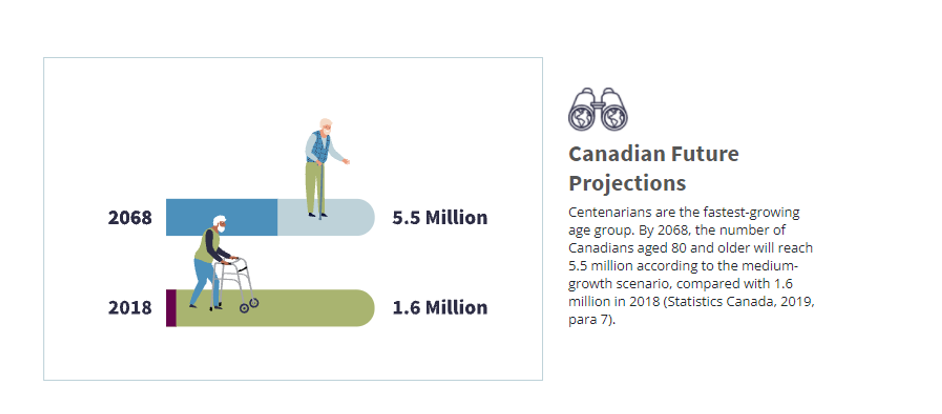Module 3: Quality course structure and content
3.4 Gaining learner attention (Event 1)
What learners have to say…
. . . it’s very easy to get bored and distracted [in an online course]. And I mean I’m at my computer. I could go to anything and read it. I have my phone sitting here, I could just wander off. [If I’m] at home, I could go for a snack.
(Troop et al., 2020)
This quotation explains, in a very frank and authentic way, why it’s important to think about gaining your learners’ attention in online courses. Distractions abound when studying online, and even the most determined of learners can find their attention wandering. As Gagné indicates in his Nine Events framework, focusing your learners’ attention on the topic of study is the first step to engaging them in learning.

Caption: In Gagné’s Nine Events of Instruction framework, Event 1 focuses on gaining your learners’ attention.
Credit: University of Waterloo | Image Description
Capturing learners’ attention doesn’t necessarily require resource-intensive strategies (e.g., a video), although it can. Consider the learner quote that introduced this section—did it capture your attention? It took less than a minute to locate and paste into place. Simple strategies can often be quite as effective as more complex ones.
Strategies to focus your learners’ attention on a topic
Some ways to gain learners’ attention include
- a thoughtful or provocative quotation,
- a question or reflective prompt,
- a statistic,
- a short description of a relevant real-world event,
- a short narrative,
- an image,
- a (very) short video, or
- demonstrating enthusiasm for the value of your subject.
Examples of how gaining attention could work
Below we’ve provided some examples of ways to capture learners’ attention, arranged from the less to the more complex.
Quality Essential
Example 1: Present a thoughtful or provocative quotation
The following quotation from the UDL guidelines on recruiting learner interest presents a bold and attention-grabbing claim to introduce the guideline:
Information that is not attended to, that does not engage learners’ cognition, is in fact inaccessible. It is inaccessible both in the moment and in the future, because relevant information goes unnoticed and unprocessed.”
Quality Essential
Example 2: Present a question or reflective prompt
In the following example from an introductory Italian language course, learners are asked to identify the nouns from a list of Italian words to show what they already know about the topic at the start of the module on nouns. Feedback is provided automatically.
Credit: Dr. Roberta Cauchi-Santoro & Dr. Andrea Privitera, Department of Italian and French Studies, St. Jerome’s University in the University of Waterloo
Quality Essential
Example 3: Present a statistic
In the following example from a sociology course, a statistic capturing future projections of an aging population aims to capture the attention of learners and highlights that the 80+ demographic are the fastest growing age group in Canada.

Credit: Katelyn Dunn, Interdisciplinary Studies, Conestoga College | Image Description (PDF)
Quality Essential
Example 4: Present a short narrative
In the following short narrative (presented in the form of a simple audio recording overlaying an image), the instructor provides an explanation of why a particular image, that does not appear to be immediately connected with the topic of study, was chosen as a visual representation of the course.
This narrative was posted as an announcement in the LMS and is used as a strategy to focus learners’ attention on a new perspective that the instructor wanted to emphasize in this part of the course (i.e., the entire complex health care system), which differed from the perspective they had been introduced to in their prerequisite course (i.e., individuals on a health care team). Narrative is great at capturing attention (who doesn’t like a good story?) and, in this case, helps learners to consider different and broader perspectives while also signalling that every component in the course (including something as small as a cover image) has a purpose, which is appreciated by learners.
Transcript | Video length ~ 3 mins.
Credit: Dr. Rosemary Brander, 2019, Advanced Interprofessional Approaches in Healthcare (IDIS 480), Bachelor of Health Sciences, Department of Biomedical and Molecular Sciences, Queen’s University
Quality Essential
Example 5: Present an image with emotional impact
In the following example from a Shakespeare course, an emotionally charged image is paired with a quotation at the start of a module on Romeo and Juliet, introducing learners to a theme that will be discussed later in the module.

Credit: Dr. Ted McGee, Department of English Language and Literature, and the Centre for Extended Learning, University of Waterloo
Quality Advanced
Example 6: Present a short video
In the following example from an introductory psychology course, a provocative question is used at the start of a short video to capture learners’ attention on the topic of evolutionary explanations for behaviour. Surprise is also an effective way to capture learners’ attention.
Transcript for PSYCH 101: Would you have sex with a stranger? available on YouTube | Video length ~ 2 mins.
Credit: Dr. Paul Wehr, Department of Psychology, and the Centre for Extended Learning, University of Waterloo
Important note about content warnings
In our eagerness to gain our learners’ attention, we need to be careful not to overdo it and shock them with potentially disturbing or explicit visuals, videos, or other media elements that are not pertinent to the learning outcomes. If there is a good reason to include these kinds of elements in your course, be sure to include a content warning so that learners know what to expect. Content warnings are not intended to censure or omit challenging material from a course, but to forewarn learners of potentially sensitive topics, giving them autonomy over their learning, as well as signalling that instructors respect their well-being. If unsettling topics occur throughout your course, you might want to consider including a content warning in your syllabus such as the one provided below.
Example content warning
As part of our weekly lectures, readings, and classroom discussions, we will engage with topics that may be unsettling or triggering for you or your classmates.
I am committed to treating these topics with sensitivity and respect, and ask all students to do the same. If you have any concerns about any aspect of the course, weekly topics, or required readings, please reach out to me directly and we can discuss how to engage in the course while protecting your own health and well-being.
Credit: Dr. Alexandra Logue, University of Toronto
An EDII perspective on gaining learner attention
Here are a few EDII-informed strategies for gaining learner attention:
- Highlight a perspective or marginalized view that is not usually heard in typical discourse of the topic: This could be as simple as a quote from a prominent figure in the discipline (who could be from the academic, workplace, or community sectors) and/or who is from an under-represented demographic (e.g., Black, Indigenous, person of colour, person with a disability, from the Global South, etc.).
- Present “common misconceptions” or “stereotypical” facts about a concept or topic and ask learners to critically evaluate or reflect deeply on the information and how it relates to them, their current thinking, or what they’ve learned (or are about to learn) in the course. Getting learners to think differently and critically about the information they receive (i.e., what is considered normative knowledge and their relationship to it), and to understand that they “don’t know everything” before diving deeply into the module content can help make learners more receptive to learning.
A note of caution: this approach must be undertaken with care in order not to unintentionally create harm! It can be easy to perpetuate harmful perspectives or stereotypes or to engage in tokenism or microaggressions—to avoid this, be sure to consult with allies, colleagues, or educational support staff who can help you to create a learning environment that promotes curiosity and critical thinking.
Activity: Attend to this topic!
Learning outcomes:
This activity is directly aligned with Course Learning Outcome (CLO) 1: Recognize and implement key features of quality in learner-centred online course design and CLO 6: Structure and present your online content and assessments in ways that facilitate student learning and foster a sense of community.
Instructions:
Equipped with the above examples to spur your creativity, we’ve provided a place for you to document your initial ideas about how to capture your learners’ attention at the outset of each module/topic.
Option 1: Download the Attend To This Topic! Worksheet [DOCX] to create a Word version to complete offline.
Option 2: Complete the activity in-line below. If you wish to save your in-line results, be sure to download your work by clicking the Export tab at the bottom of the left-hand navigation bar in the activity before moving on.
Please note, this activity is intended for your own reflection and learning. Your responses are private and are deleted when you refresh or navigate away from this page.

